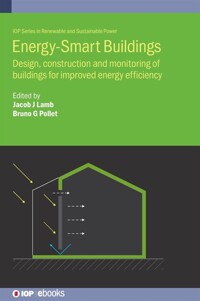
단행본
Energy-Smart Buildings: Design, Construction and Monitoring of Buildings for Improved Energy Efficiency
- 발행사항
- Bristol : Iop Publishing Ltd, 2020
- 형태사항
- by chapter page ; 26cm
- 서지주기
- Includes bibliographical references
소장정보
| 위치 | 등록번호 | 청구기호 / 출력 | 상태 | 반납예정일 |
|---|---|---|---|---|
이용 가능 (1) | ||||
| 자료실 | E207489 | 대출가능 | - | |
이용 가능 (1)
- 등록번호
- E207489
- 상태/반납예정일
- 대출가능
- -
- 위치/청구기호(출력)
- 자료실
책 소개
Energy-Smart Buildings intends to provide a brief research source for building technology and regulations in terms of energy efficiency, as well as discussing fundamental aspects and cutting-edge trends for new buildings and retrofitting the current building stock. Additionally, sources of renewable and sustainable energy production and storage are reviewed, with case studies of such systems on buildings in a cold climate. This volume provides industry professionals, researchers and students with the most updated review on modern building ideas, and renewable energy technologies that can be coupled with them. It is especially valuable for those starting on a new topic of research or coming into the field.
목차
1. Introduction to energy efficiency in buildings
1.1. Introduction
1.2. Protocols and legislation
1.3. Energy performance standards in the European Union
2. Basic principles of energy use in buildings
2.1. Basic principles of heat transfer
2.2. Energy balance of the building
3. Building design and envelope
3.1. Cold climate design
3.2. Strategies to reduce the energy demand
3.3. Components of the building envelope
3.4. Building retrofitting
3.5. Conclusion
4. Smart components and systems
4.1. Introduction
4.2. Smart system description
4.3. Smart building technology classification
4.4. Smart building technologies
4.5. Intelligent buildings
4.6. Building automation control systems
4.7. Energy flexibility
4.8. User interaction
4.9. Future benefits and challenges
5. Energy production in buildings
5.1. Introduction
5.2. Solar electrical energy
5.3. Wind electrical energy
6. Energy storage
6.1. Biomass
6.2. Hydrogen
6.3. Present uses of hydrogen and biomass
6.4. Heat energy storage
6.5. Energy storage by batteries
7. Optimal control of batteries and hot water heaters in zero emission neighbourhoods
7.1. Introduction
7.2. Case study of the campus at Evenstad
7.3. Conclusion
8. Spot price and carbon emissions in a zero-emission neighbourhood
8.1. Introduction
8.2. Methodology
8.3. Results
8.4. Discussion
